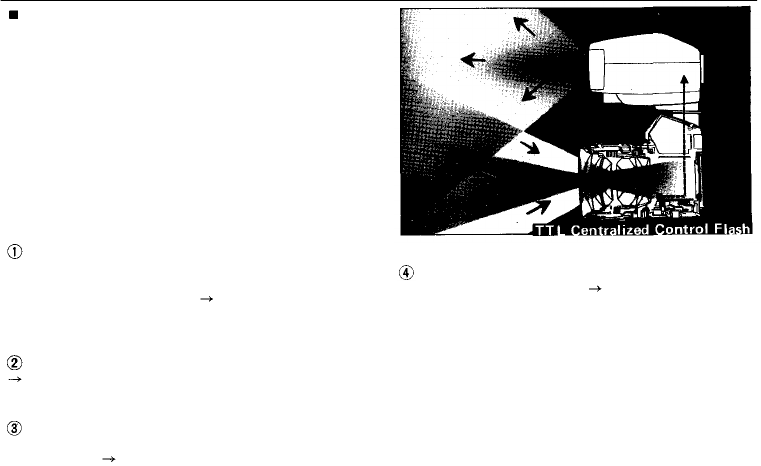
FLASH PHOTO GROUP UNITS
TTL Centralized Control Flash by T32 (T20)/
OM-2 Combination
The T32 (T20) utilizes the OM-2's own built-in
SBC light sensors. The sensors read the build-up
of
light
from
the T32
(T20)
which
passes
through
the taking lens to reach the film surface, letting
the electronic brain of the camera cut off the
flash emission when the correct exposure has been
made.
On conventional auto flash units, the auto sensor
is
built
into
the
flash
unit.
The
sensor regulates
flash emission independently of the camera. While
normal auto flash units can also give a correct ex-
posure, they are far less versatile and convenient
in use. Their drawbacks include:
The need to set film speed and lens aperture
on
both
the
camera
and the
flash
unit,
which
leads
to exposure errors caused by mistaken film speed
and/or aperture alignment. With the T32 (T20)/
OM-2 combination, once these values have been
set on the camera there is no need to reset them
on the flash unit.
Restrictions on the f-number that can be used.
With the T32 (T20)/OM-2, f-number can be
selected freely because the light is measured
through the camera lens.
Inability to change the light measuring angle
of the sensor according to the taking angle of the
chosen lens. With the T32 (T20)/OM-2, light
measuring angle always coincides with the picture
angle of the taking lens.
Restricted close-up range and incompatibility
with extension tubes, etc. With the T32 (T20)/
OM-2, close-up and diffused flash photography
can be made easily. As the exposure is calculated
inside the camera, the methods of using the flash
unit are entirely unrestricted.
65


















